
The snail darter is a small species of freshwater ray-finned fish, a darter from the subfamily Etheostomatinae, part of the family Percidae, which also contains the perches, ruffes and pikeperches. It is found in East Tennessee freshwater in the United States and in small portions of northern Alabama and Georgia. First recorded in 1973, the snail darter was listed as endangered under the U.S. Endangered Species Act of 1973 by 1975. The species was at the center of a major environmental law controversy that involved a lawsuit seeking to halt the completion of Tellico Dam, which posed a risk of extinction for the snail darter by blocking its migratory route. The case was eventually appealed to the U.S. Supreme Court, which ruled on it in its 1978 decision Tennessee Valley Authority v. Hill.
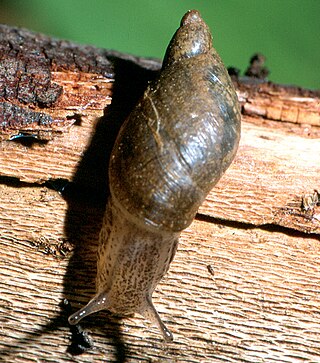
The Kanab ambersnail, scientific name Oxyloma haydeni kanabense or Oxyloma kanabense, is a critically endangered subspecies or species of small, air-breathing land snail, a terrestrial pulmonate gastropod mollusc in the family Succineidae, the amber snails. The common name of the amber snails is based on the shell, which is translucent and when empty usually resembles the color of amber.

Physidae, commonly called the bladder snails, is a family of small air-breathing freshwater snails, aquatic pulmonate gastropod molluscs in the superfamily Lymnaeoidea.

Physella is a genus of small, left-handed or sinistral, air-breathing freshwater snails, aquatic pulmonate gastropod mollusks in the family Physidae.

Physella acuta is a species of small, left-handed or sinistral, air-breathing freshwater snail, an aquatic gastropod mollusk in the family Physidae. Common names include European physa, tadpole snail, bladder snail, and acute bladder snail. In addition, Physa acuta, Physa heterostropha and Physa integra are synonyms of Physella acuta.

Physa is a genus of small, left-handed or sinistral, air-breathing freshwater snails, aquatic pulmonate gastropod mollusks in the subfamily Physinae of the family Physidae.
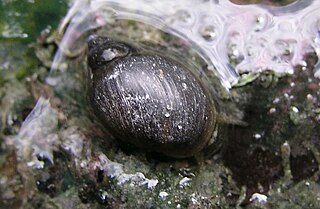
The Banff Springs snail is a species of small air-breathing freshwater snail in the family Physidae.

Leptoxis ampla, common name the round rocksnail, is a species of freshwater snail with a gill and an operculum, an aquatic gastropod mollusc in the family Pleuroceridae.
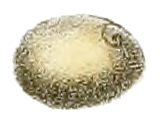
The flat pebblesnail is a species of freshwater snail, an aquatic gastropod mollusk in the family Lithoglyphidae.
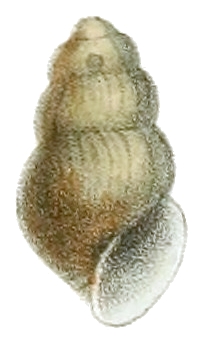
The cylindrical lioplax, scientific name Lioplax cyclostomaformis, is a species of freshwater snail with gills and an operculum, an aquatic gastropod mollusk in the family Viviparidae.
The Fish Lake physa, scientific name Physella microstriata, was a species of air-breathing freshwater snail, an aquatic gastropod mollusk in the family Physidae.
The cave physa is a species of small, air-breathing, freshwater snail, an aquatic pulmonate gastropod mollusk in the family Physidae. It lives only in caves.
The Utah physa, scientific name Physella utahensis, is a species of freshwater snail, an aquatic gastropod mollusk in the family Physidae. The common name refers to the state of Utah.
The Wet rock physa, scientific name Physella zionis, is a species of freshwater snail, an aquatic pulmonate gastropod mollusc in the family Physidae, the bladder snails. This species is endemic to two connected canyons, Zion Canyon and Orderville Canyon, along the north fork of the Virgin River in Zion National Park, Washington County, Utah, a stretch of about 5 kilometers (3.1 mi).
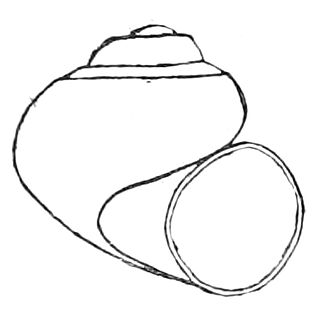
The Utah roundmouth snail, also known as the Utah valvata or desert valvata, scientific name Valvata utahensis, is a species of freshwater snail with a gill and an operculum, an aquatic gastropod mollusc in the family Valvatidae, the valve snails.
Physella wrighti, common name the hotwater physa, is a species of small air-breathing freshwater snail, an aquatic gastropod mollusk in the family Physidae.
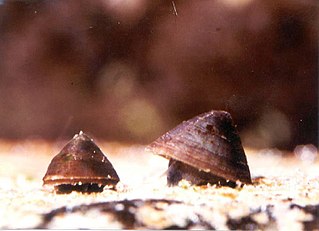
Idaholanx fresti, the Banbury Springs limpet or Banbury Springs lanx, is a rare species of freshwater snail, an aquatic gastropod mollusc in the family Lymnaeidae. It is the only species in the genus Idaholanx. First discovered in 1988, the species was formally described and named in 2017.










